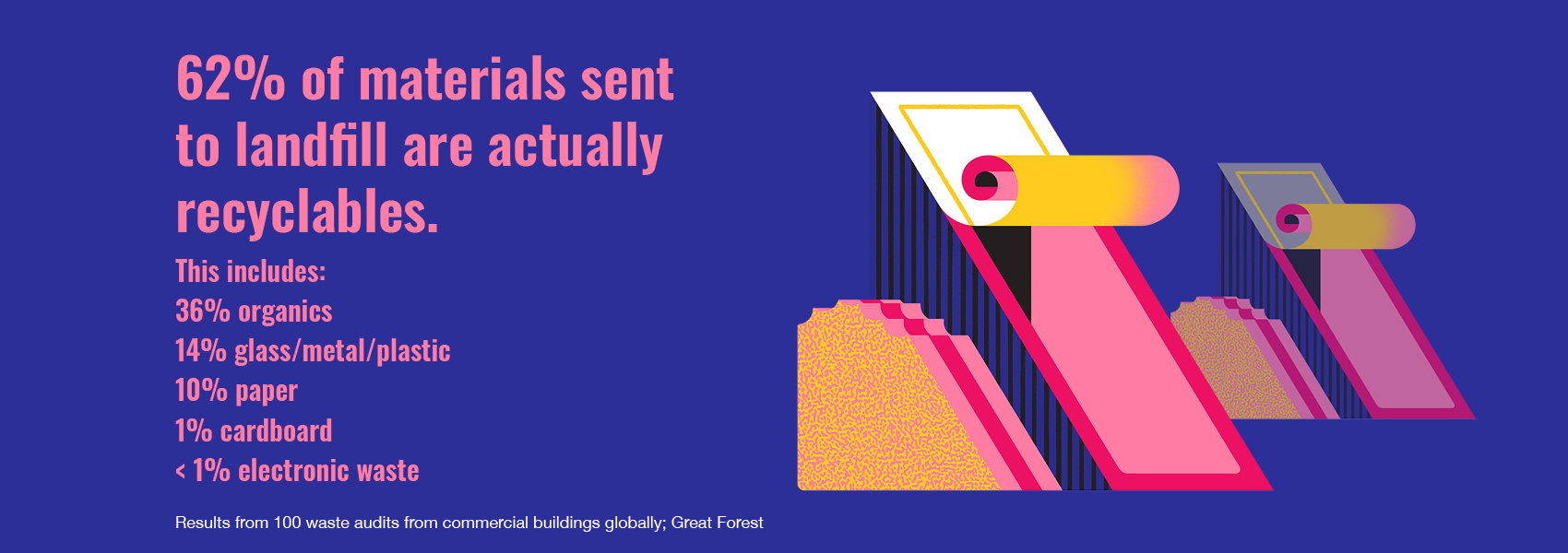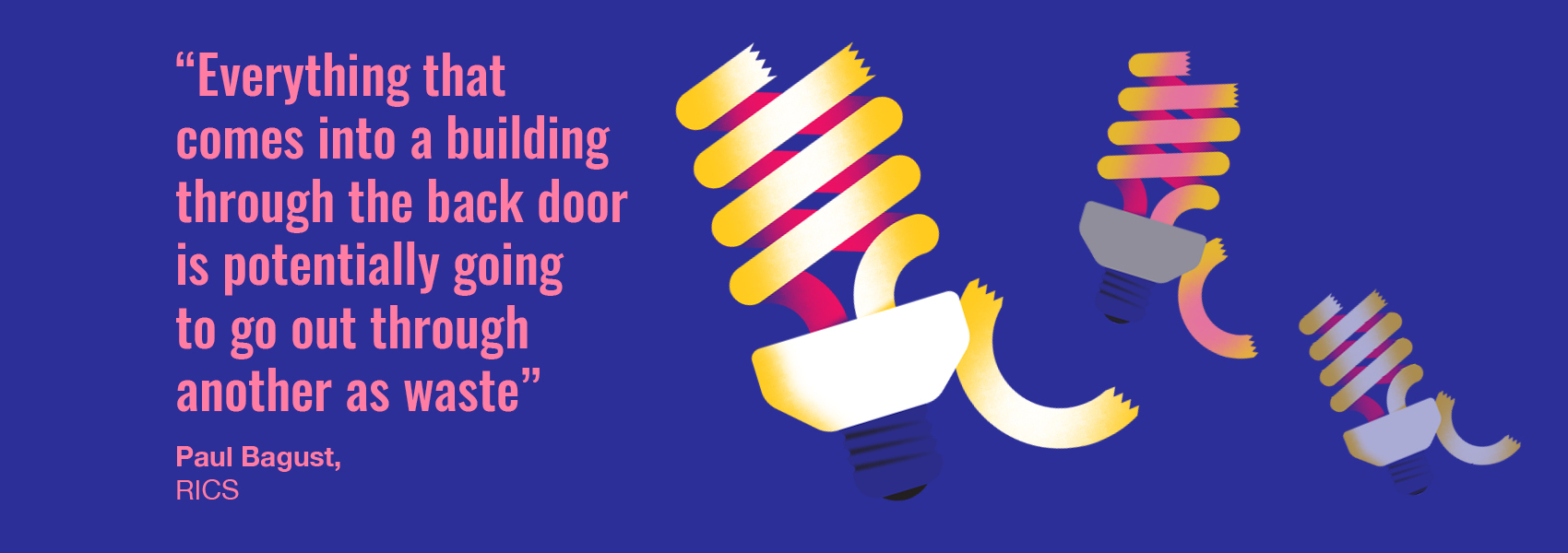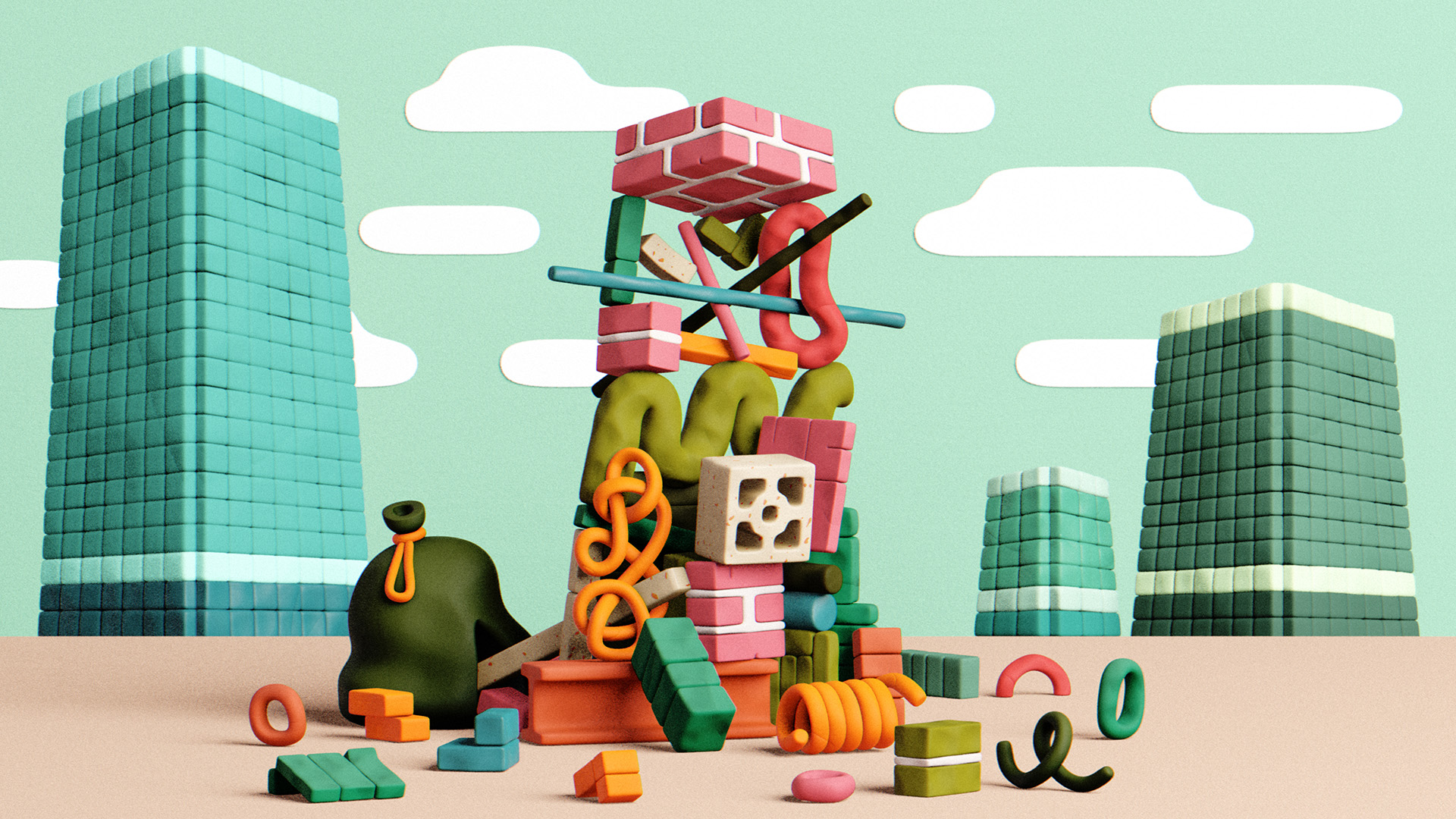
Illustration by Andrea Manzati / Synergy Art
In April, global real estate company JLL moved into new offices in London’s Docklands. Billed as one of the most sustainable commercial buildings constructed in the UK, none of its operational waste will go to landfill – its aim is for every single kilo to be recycled or reused.
A month earlier in Singapore, facilities and property management firm C&W Services opened its revamped headquarters in Chai Chee. It has a zero-waste food pantry, new technology to track its rubbish generation and a composting scheme to send its coffee waste to. These companies are taking ‘designing out waste’ to a new level, ensuring their day-to-day operations are transforming the waste chain, keeping resources in circulation and reducing carbon emissions.
With real estate contributing 37% of the world’s annual greenhouse gas emissions, eliminating waste in a building’s lifecycle is a key part of transitioning to a net zero carbon future. While there has been an understandable focus on reducing waste in construction, the question now is how to design it out of our day-to-day building operations.
How can we ensure that waste from offices, retail and leisure becomes a thing of the past and our language of the future is about reusing resources and creating circular economies?

Commercial waste
Waste from commercial property is traditionally classified into three areas: food and organics, landfill, and recycling. “Everything that comes into a building through the back door is potentially going to go out through another as waste,” says Paul Bagust, head of property standards at RICS. “This area needs a lot more work, we need to think about what we are doing with waste and how we can manage it differently.”
A study last year from New York-based sustainable waste management consultant Great Forest, highlighted what it deemed commercial property’s “missed opportunities”. It analysed more than 100 waste audits from commercial buildings across the globe and found that a whopping 62% of materials sent to landfill were actually recyclables that could have been diverted and reused. More than a third of this was organic or food waste which could have been composted. It concluded that: “businesses responding to climate change with ESG frameworks have to understand the waste they are generating.”
This, says Bagust, comes down to data. He points to the RICS’ new International Building Operation Standard (IBOS), launched in February. This is a performance measurement framework, which for the first time incorporates sustainability elements such as recycling and waste disposal, user satisfaction and wellness with traditional measures such as cost and compliance.
Bagust says IBOS, which comes with an assessment tool, is designed to show how those elements are inextricably linked together in the performance of a building. It is also intended to help the industry expose its data gaps – so it can understand where the problems are. “Sustainable waste management needs to be embedded within the thinking of entire property strategies,” says Bagust. “You have to be able to measure and assess before you can improve.”
Back in Singapore, C&W Services has introduced weighing machines, which its community manager Grace Chin, says will give them real time data on the amount of waste its 500 employees generate. Its coffee waste is weighed daily and sent to a low-carbon, urban, vertical farm to make compost for organic vegetables.
Later this year Chin says she hopes to push this further and for C&W to become the first office occupier in the country to compost its food waste in a collaboration with Singapore National Parks. Food is one of Singapore’s largest waste streams, and Chin says she’s also launching an educational campaign to encourage employees and their families to start composting. “We are trying to raise awareness and showcase to clients and to society what can be done,” she says.
She points to a food sharing programme from Singapore’s hotels and restaurants as an example of how collaboration in the commercial property sector can “change the food waste chain.”
Through the use of apps, including Treatsure, major hotels, retailers and restaurants are redistributing food to local people that would have otherwise been wasted. In Central London, landlord Crown Estates ran a pilot with 12 of its restaurant tenants to reduce food waste by 25%. It closed early in 2020 because of the COVID-19 pandemic, but it’s now using the data to advise tenants on how to reduce food waste during preparation and in menus.

Sending zero waste to landfill
Stuart Cochrane, workplace sustainability and IMS leader at JLL, says waste management in an ESG agenda can be a quick win. “It’s quite an easy area to address,” he says. “And you can keep pushing further and further as you get a greater understanding of your supply chain and the materials coming into your office.” At JLL’s new Docklands office, 20 Water Street, he says it achieved a zero waste to landfill policy in its fitout and has the same policy in place for its daily operations.
Choosing a landlord that shared its philosophy was “part of the base-level selection process,” says Cochrane. In fact, it has a green lease clause with its landlord Canary Wharf Group (CWG), a first for JLL, which sets legally binding targets on maximising recycling and reducing waste. Cochrane says it pushed hard for CWG to introduce industrial weighing machines so it could have tenant-specific waste data.
He says JLL can track its waste through an app, right down to how it’s processed ‘downstream’. And if the property industry wants to achieve zero waste to landfill and maximise the value of its resources, he says it needs to change its views. ‘We need to stop talking about waste and start talking about resources,’ Cochrane says. “The language here is really important. It should be around the circular economy, where we view the stuff that we don't want as having a value, rather than something to get rid of.”
Only then, he adds, can we “design out waste” from our buildings. “We don’t want to lose resources from our industrial system, we want to keep them in circulation as long as possible.”


